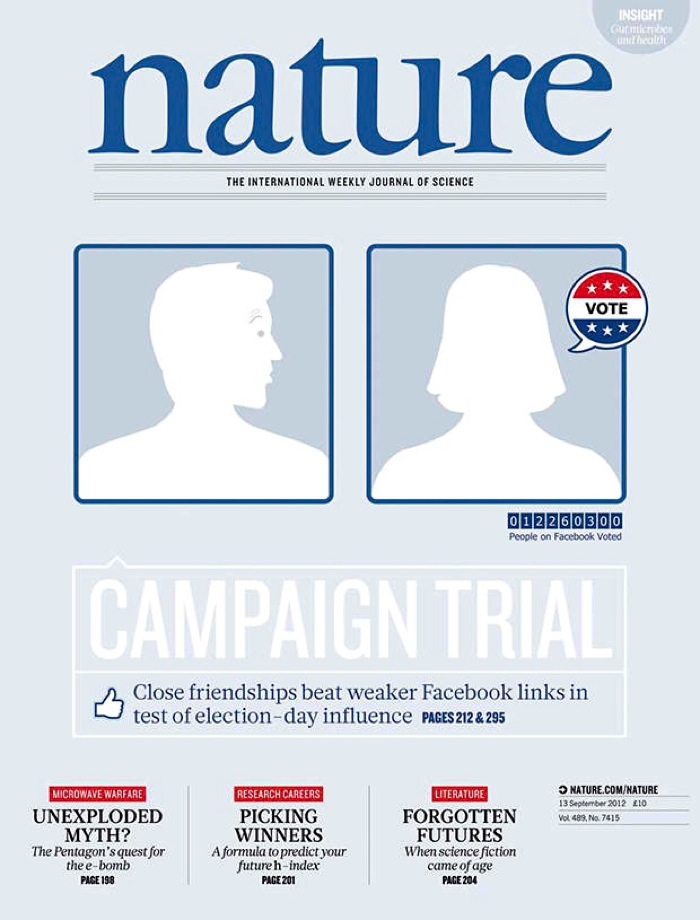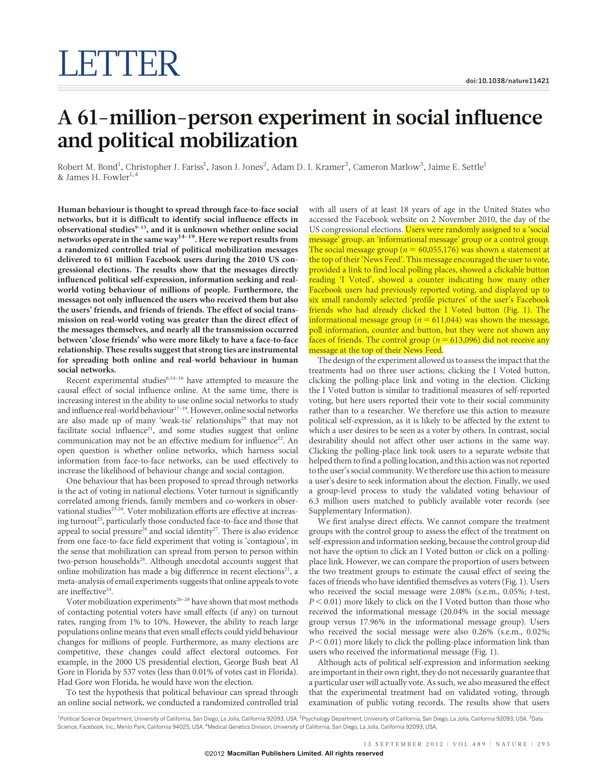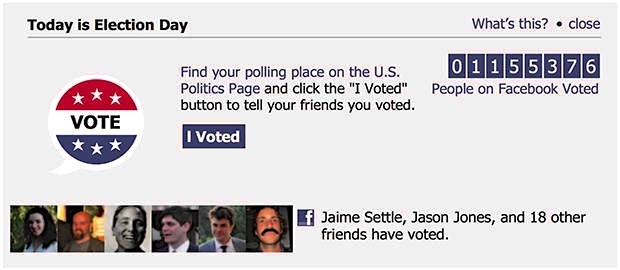All I see are six packs and thin people when I drive through this neighborhood. Is everyone here thin? Where I live, everyone looks like me. (taxi driver to Ted, morning of September 17, 2012)
He’s more or less correct, in Ward 2 of Washington, DC, the obesity rate is 13 %. I’m going to weave the story of this trip throughout this post, because it’s perfectly relevant here…read on.
Last week, I showed examples of other industries leveraging science to influence behavior in ways health care does not (yet) (See: Behavior Change: What can we learn from other industries? – EXAMPLES | Ted Eytan, MD). This is an example of that, and goes a step further, into contagion.
This paper is authored by a team that includes James Fowler (@connected_book) , who alerted me to it. It’s also been widely publicized, including in the New York Times.
The industry (if you call it that) is voting. The network used to do the test is Facebook. The science is similar to what I showed last week – the influence of relevant peer comparisons, taken a step farther. Behavior change of a person can not only be enabled, but the network connected to the person so enabled will also be influenced.
The authors randomized 60,055,176 people on voting day in 2010 to receive a message at the top of their feed that their friends had voted, with their profile photos. An additional 611,044 were shown an informational message but without links to friends’ photographs, and 613,096 people did not receive any message at all as the control group.
They did something novel and cross-matched user information with public voting records to find out what the impact on voting behavior was. The % increase (0.39%) was very small, however, statistically significant, so a little bump in voting across this many people made a difference.
The impact was only found in the group that saw their friends profile photos. The informational message, without their friends attached, had no impact. In other words, when people know what people around them are doing, they are likely to follow suit.
The Giant (grocery store) is about as far from here to there (a block or so) – people where I live drive to it. (taxi driver to Ted)
The authors then used complicated algorithms and likelihood analysis to determine who is a close friend, who saw what message, and how this influenced real-world behavior. They found that friends of people seeing the I Voted message were more likely to click the “I Vote” button or the link to find out more about voting. Close friends influenced an actual vote (remember, cross-matched to public voting records), based on the expectations of voting among people who weren’t connected to people who got these messages.
So there you have it, other industries are using science to guide behavior of actual people, and the people networked to those people. And they’d like to help us.
How might this work in health care? I’m not 100 % sure. Going back to Maria, the educated Latina woman who I mentioned in my last post, we might discover that the right social normative message that enabled her to get a mammogram also caused her close contacts to get mammograms, too. What I’m not sure of is where she should get that message – in her social network? In the network of her health system? In the network of her physician’s practice? There are a lot of powerful relationships in there….
So what happened with my taxi driver?
We didn’t talk at all on the journey to the airport, because I took a short nap. When I woke up he said, without prompting:
You know, I’ve been thinking, I decided I’m going to get back in shape.
He said when he moved to the United States, he was thin (“with a 6 pack” he says), and now he was at 220 pounds. He told me he was ready to return to the foods that he was used to before he moved here, and on reflection of his former self, seemed to me to have the confidence to do it.
He said multiple times how driving the streets of Ward 2 was so different from where he lived.
This taxi driver and I wouldn’t have what the authors would call strong ties. It’s interesting,though, that a person could be inoculated through repeated exposure to an environment where health is the norm, not the exception (and that this of all topics would be the content of my ride to the airport!).
At this point I confessed I knew quite a bit about the obesity rates for Washington, DC and the impact of environment on people’s behavior.
Having read this article I had one more piece of advice for him, in addition to my wish for his good health.
I said, “Make sure you tell as many people that you’re doing this. You can change not just your health but the health of people around you. Health is as contagious as disease.”
Thanks, James Fowler and team for the work. You should spend more time with the health system :).



3 Comments
@meganranney Thanks for taking a look! I am still fixing up the piece for @healthcareILN – hard issue to convey…
@tedeytan @healthcareILN indeed a tough topic for 1pg, that’s why we teach whole courses on it… nice summary though. # publichealth #SDoH
@meganranney @healthcareILN Maybe if I create enough confusion it will stimulate enrollment for you :). Thanks for your help!